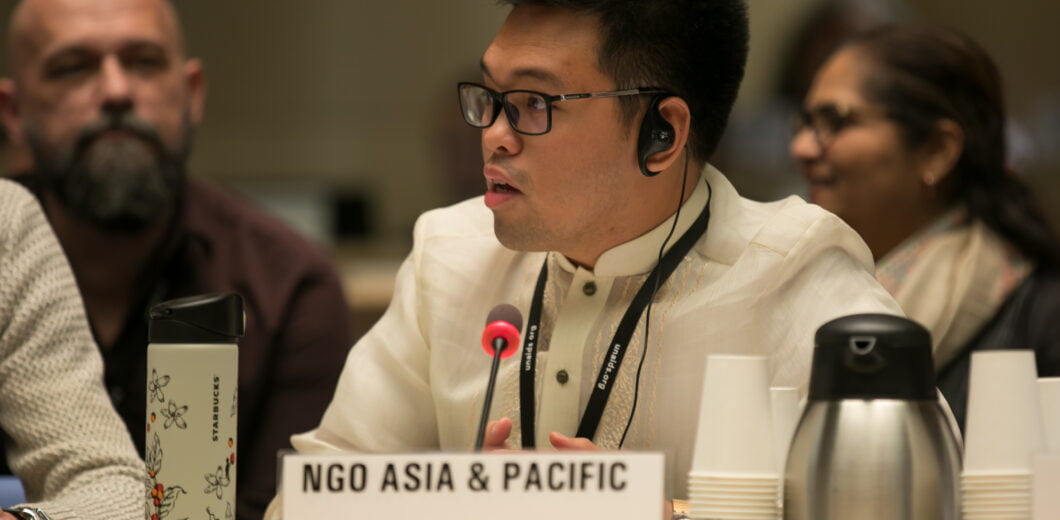According to the “Health for the World’s Adolescents” report 2014 released by the World Health Organization, AIDS is now the second most common cause of death globally among adolescents aged 10-19. This does not mean that we have to isolate HIV as an issue. The All-In to End Adolescent AIDS Launch Report by UNICEF early this year shows that adolescent girls are disproportionately affected by gender-based inequality, age-disparate sex, and intimate partner violence.
In the principle of ensuring healthy lives and well-being for all as enshrined under Goal 3 of the Millennium Development Goals (MDGs), we need to find a way to bridge HIV and sexual and reproductive health and rights (SRHR) together that neither oversteps nor overshadows one another. Still, both address issues of young people from key populations in a person-centric approach. To do that, we have to begin by recognizing that more than HIV, young people from key populations have SRHR issues, too.
One of the primary issues that young key populations face is the difficulty of accessing SRHR information, services, and commodities. In many countries in Asia and the Pacific, the age of consent laws restrict those who are considered minors (typically below the age of 18 but varies depending on country laws) from accessing anything related to SRHR, from information about sexual and reproductive health, STI tests and treatments, and contraceptives, particularly condoms. The evolving capacities of the child, a concept first introduced in the 1989 Convention on the Rights of the Child (CRC), acknowledges the ability of the child to “form his or her views and the right to express those views freely in all matters affecting the child” (Article 12, CRC). However, this has been continuously in opposition with the moral responsibility of the parents and legal guardians and has been translated differently in many countries, eventually leaving the onus for the child’s parents or legal guardians to decide on behalf of the child. Moreover, in countries like Malaysia, Indonesia, and some provinces of China, the marital consent law also adds additional restrictions for a young person to access SRHR information, services, and commodities. Young single people are denied access to these services unless they are consented by their spouse.
A continuum of care for young key populations – from education to diagnosis to treatment and referral to services – does not seem to exist, or if there is, it is incomplete. As a young gay man growing up in the Philippines, it has been challenging to look for services that would provide holistic sexual and reproductive healthcare. Seeking information on STIs and HIV is only lodged in social hygiene clinics, while HIV education in school curricula remains under the framework of medical or biological sciences. It is challenging to look for psychologists and guidance counselors whom I can talk to about my relationship issues so I will not feel ashamed to share them. This is even a double burden among my young people living with HIV (PLHIV) friends who find it challenging to find spaces where they can talk about their lives more than being infected by HIV, such as discussions about sex, where they feel safe and are not judged. More than HIV, young people living with HIV and young gay men have SRHR issues, too.
While some countries have ensured the participation of young people in policy decision-making and implementation of programs nationally, regionally, and globally, young key populations still find it difficult to participate in the SRHR discussions. They are often left behind because of already prejudiced affiliations as members of key people. Young women who use drugs, young women who sell sex, and young trans women migrants are entirely excluded from these discussions; hence, their SRHR issues are not given attention. Instead of putting these populations in isolation, we need to recognize the growing demand and the coming together of community organizations and civil society organizations that call for the inclusion of young key populations into the greater frame of the SRHR agenda. This includes platforms such as Unzip The Lips and HIV Alliance’s Link Up Project. My organization, Youth LEAD, has also started exploring partnerships with YPEER to ensure that SRHR of young key populations is recognized and can be lobbied at the regional and country levels.
Ultimately, sexual and reproductive health and rights (SRHR) are not accessory rights. These are not even rights selective only for a specific population segment. SRHR is contingent on achieving the optimum development of ALL people, including young people from key populations. More than HIV, young people from key populations have SRHR issues, too, and these must be recognized. If we are to end AIDS by 2030 among young key populations, we must ensure that SRHR, particularly those linked to HIV, remains a priority.
